Top 21 Most Iconic National Park Birds
The national parks are famous for their wildlife. However, oftentimes the focus is on the larger mammals of the national parks, such as grizzly bears and bison, while birds remain out of the spotlight. That’s a shame, though, because you can see some truly spectacular national park birds all across America.
From mighty bald eagles and cunning ravens to industrious hummingbirds, elegant swans and cute puffins, there are many amazing and iconic birds in America’s national parks.
Must-See Birds in America’s National Parks
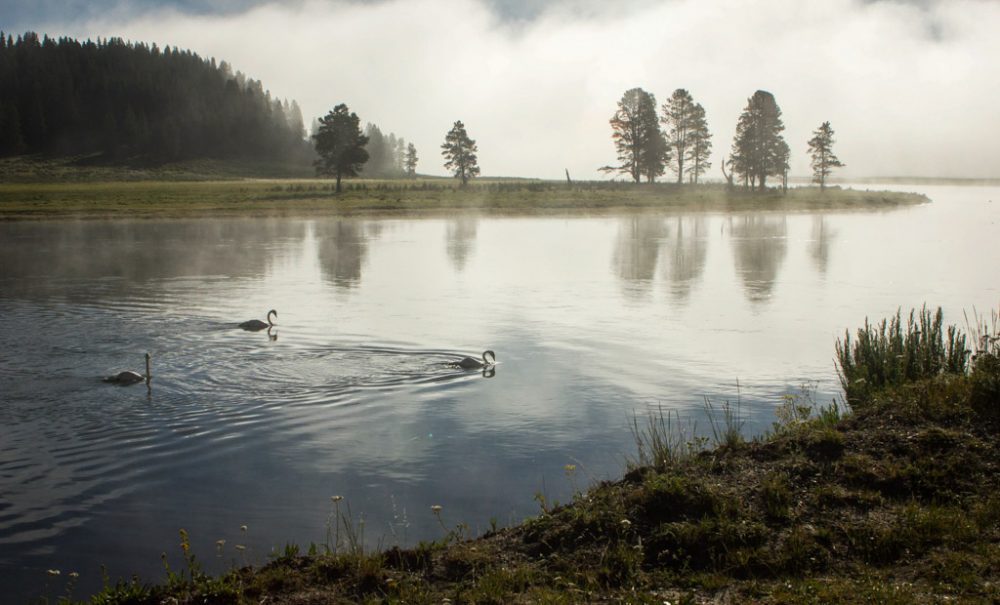
This iconic national park birds post contains affiliate links. You can read more about our Terms of Use / Disclosure here.
Top 21 Most Iconic National Park Birds
I wholeheartedly believe that birding is one of the most underrated outdoor activities. When you think about it, it’s actually pretty difficult to find a more immersive nature experience than watching birds.
You’re in—and part of—the landscape, being quiet, observant and fully in the moment. It’s basically a form of meditation and a great mindfulness exercise.
Additionally, bird watching is also one of the easiest things to do. All you need is a good set of binoculars, a birding guidebook, some comfortable hiking boots and a healthy dose of patience.
21. Great Blue Heron
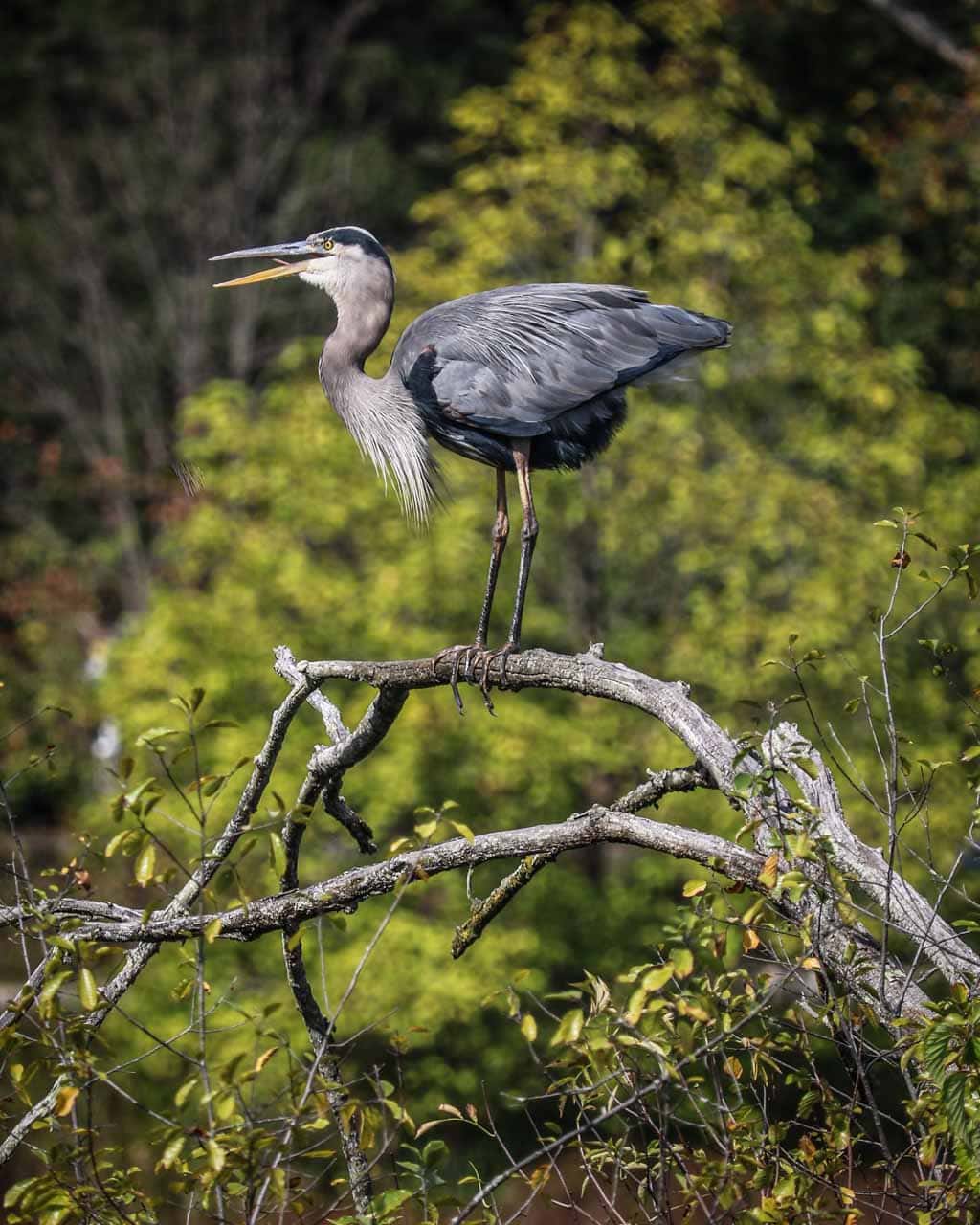
The largest heron species, great blue herons (Ardea herodias) are one of America’s most majestic wetland birds. Found all over the world, these stately animals stand out thanks to their long necks and legs, and their distinguishing gray-blue feathers.
You can often see great blue herons standing motionless in, or slowly wading through, shallow waters in ponds, marshes, rivers and shores. They mainly feed on fish, but may also occasionally snag a crab, crawfish, frog or dragonfly.
More information about great blue herons: https://www.audubon.org/field-guide/bird/great-blue-heron
Best National Parks to See Great Blue Herons
- Big Bend National Park, Texas
- Biscayne National Park, Florida
- Congaree National Park, South Carolina
- Cuyahoga Valley National Park, Ohio
- Everglades National Park, Florida
- Indiana Dunes National Park, Indiana
- Mount Rainier National Park, Washington
- Voyageurs National Park, Minnesota
- Yellowstone National Park, Wyoming, Montana and Idaho
20. Blue Jay
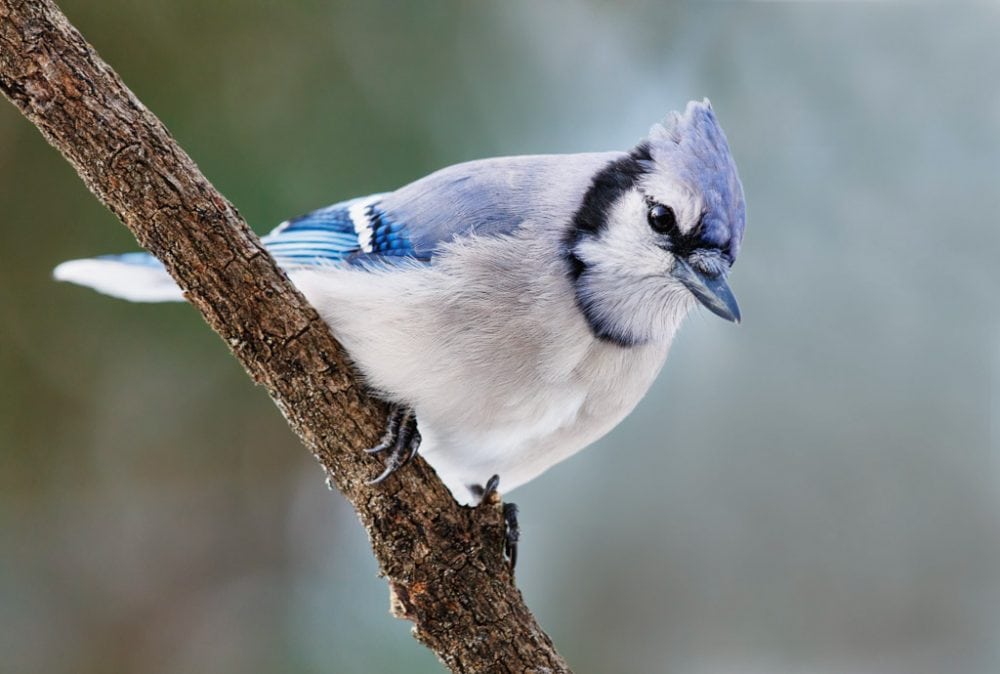
One of the most well-known birds in America, the common blue jay’s range spans all of the eastern and central United States. It’s a familiar sight to many Americans, a very noticeable bird thanks to its blue, white and black plumage, and its perky crest.
Blue jays (Cyanocitta cristata) are famous for their intelligence, complex social networks and interest in shiny objects. Because of their fondness for acorns, your best chances of spotting them are in and around oak forests.
The blue jay’s counterpart in the western United States, west of the Rocky Mountains, is the Steller’s jay. This jay species has a beautiful blue plumage with a perky black crest—no white—and behaves similarly to the eastern blue jay.
More information about blue jays: https://www.audubon.org/field-guide/bird/blue-jay
Best National Parks to See Blue Jays
- Acadia National Park, Maine
- Great Smoky Mountains National Park, North Carolina and Tennessee
- Hot Springs National Park, Arkansas
- Mammoth Cave National Park, Kentucky
- Shenandoah National Park, Virginia
- Voyageurs National Park, Minnesota
19. Northern Cardinal
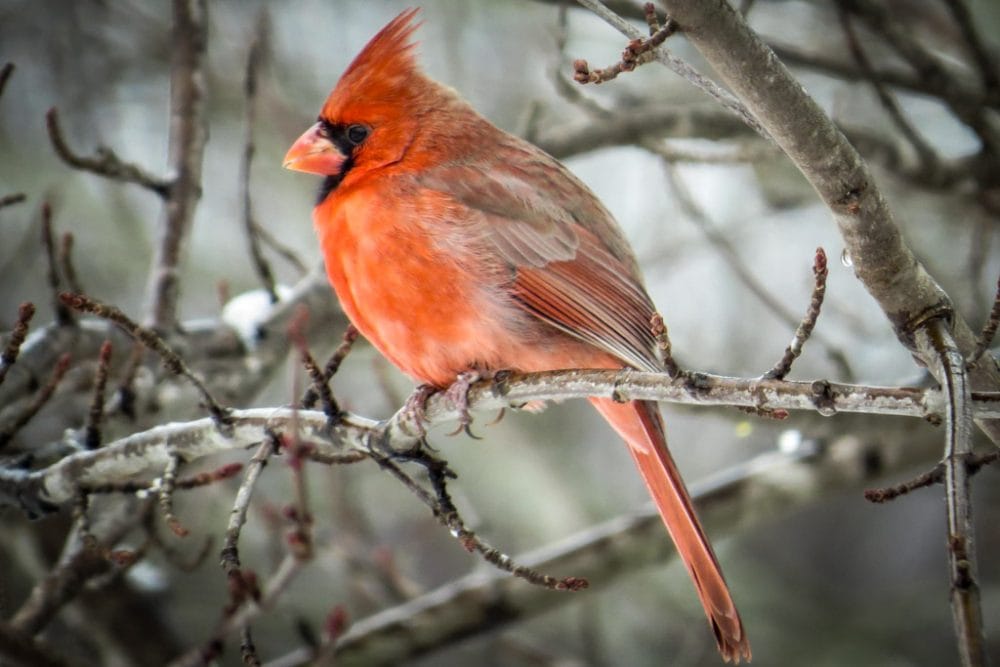
Named after Roman Catholic cardinals who wear red robes, the northern cardinal males also sport a brilliant red cloak. Females have brown feathers, with hints of red on their wings, tail and breast.
Northern cardinals (Cardinalis cardinalis) are common backyard and park birds in the eastern United States, where their range extends from the Gulf of Mexico to New England. They typically feed on seeds, fruits, spiders and berries while hopping around on the ground. Their preferred habitats are thickets and brushy woodland edges.
More information about northern cardinals: https://www.audubon.org/field-guide/bird/northern-cardinal
Best National Parks to See Northern Cardinals
- Big Bend National Park, Texas
- Congaree National Park, South Carolina
- Cuyahoga Valley National Park, Ohio
- Great Smoky Mountains National Park, North Carolina and Tennessee
- Shenandoah National Park, Virginia
18. Burrowing Owl
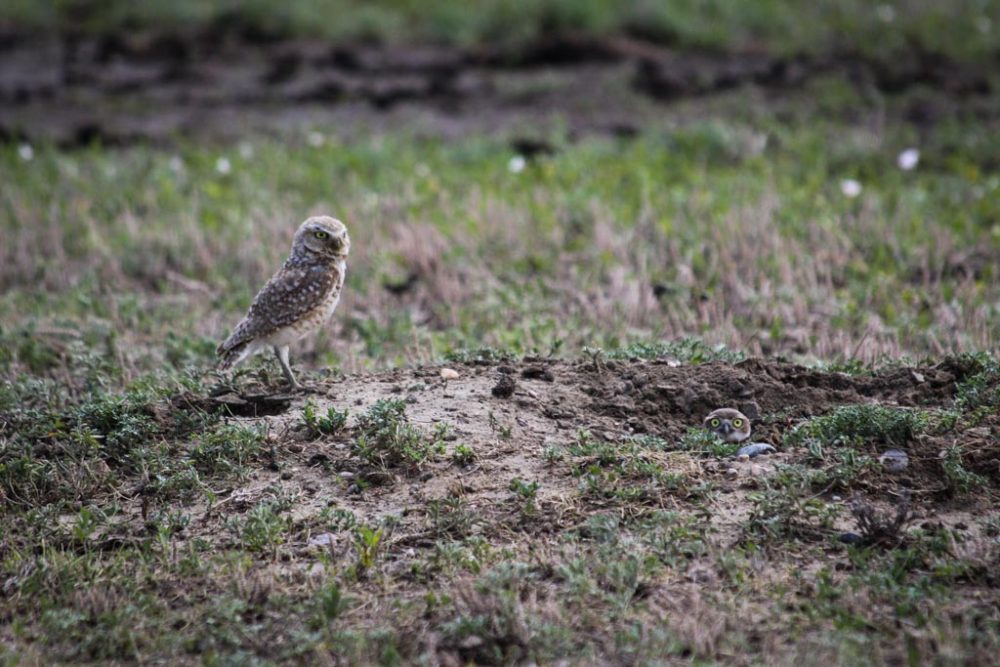
One of the smallest owls in North America, the burrowing owl (Athene cunicularia) is remarkable in more than one way. First, this is a diurnal owl, which means it’s active during the day.
Its diet consists of mainly large insects like grasshoppers, crickets and beetles, but also ground squirrels, mice and other small mammals, as well as scorpions and centipedes. Unlike most other owl species, they might also eat fruits and seeds.
Another thing that distinguishes this popular little owl—cowboys used to call them “howdy birds” because they appeared to nod from the entrance of their burrows—is that they live and nest below ground. Their occupy burrows excavated by other animals, such as prairie dogs, ground squirrels and tortoises.
The original range of burrowing owls stretched across the Great Plains, the American Southwest, Florida and Mexico.
Nowadays, due to the decrease of the Great Plains prairie dog populations, they’re a less common sight in the central U.S., except in national parks and other preserves. Burrowing owls are still a common permanent resident of the southern United States, though, from California to Texas to Florida.
More information about burrowing owls: https://www.audubon.org/field-guide/bird/burrowing-owl
Best National Parks to See Burrowing Owls
- Badlands National Park, South Dakota
- Big Bend National Park, Texas
- Death Valley National Park, California
- Everglades National Park, Florida
- Guadalupe Mountains National Park, Texas
- White Sands National Park, New Mexico
- Wind Cave National Park, South Dakota
17. Wild Turkey
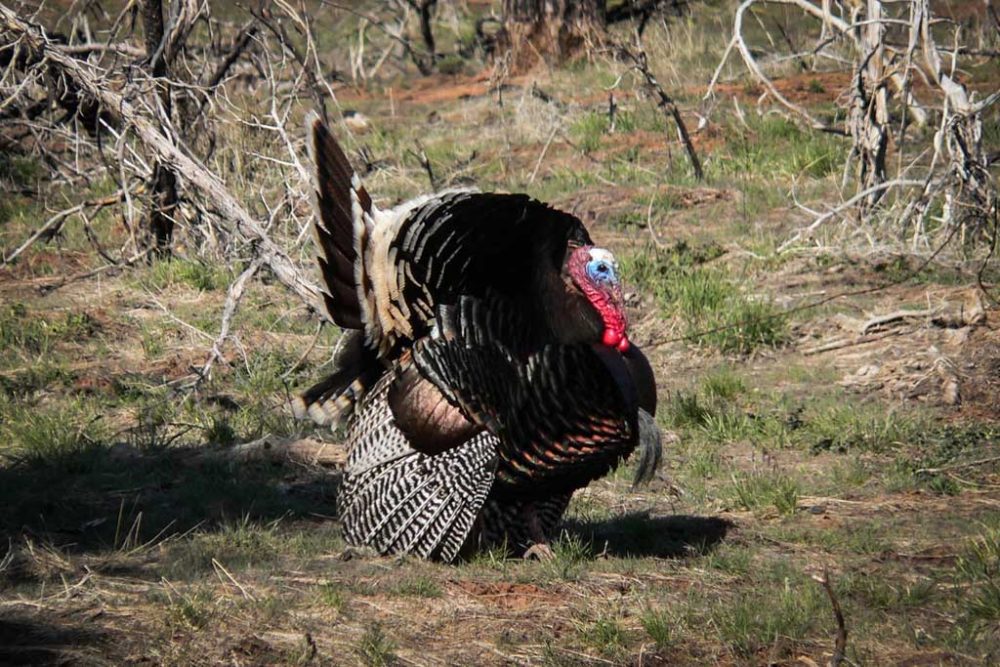
Certainly one of the most iconic national park birds, wild turkeys (Meleagris gallopavo) are one of only two New World bird species that have ever been domesticated. The descendants of these wild turkeys are now a staple of numerous Thanksgiving feasts.
By the early-20th century, their popularity as a food source had pushed them to near-extinction throughout the United States. Now, however, wild turkeys are a wildlife conservation success story. Once again, they are found in every state except for Alaska.
In fact, it’s one of the most widespread national park birds. You can find wild turkeys everywhere from Zion and Mesa Verde to Rocky Mountain, Shenandoah and Everglades.
More information about wild turkeys: https://www.audubon.org/field-guide/bird/wild-turkey
Best National Parks to See Wild Turkeys
- Acadia National Park, Maine
- Everglades National Park, Florida
- Mesa Verde National Park, Colorado
- Shenandoah National Park, Virginia
- Zion National Park, Utah
16. Pileated Woodpecker
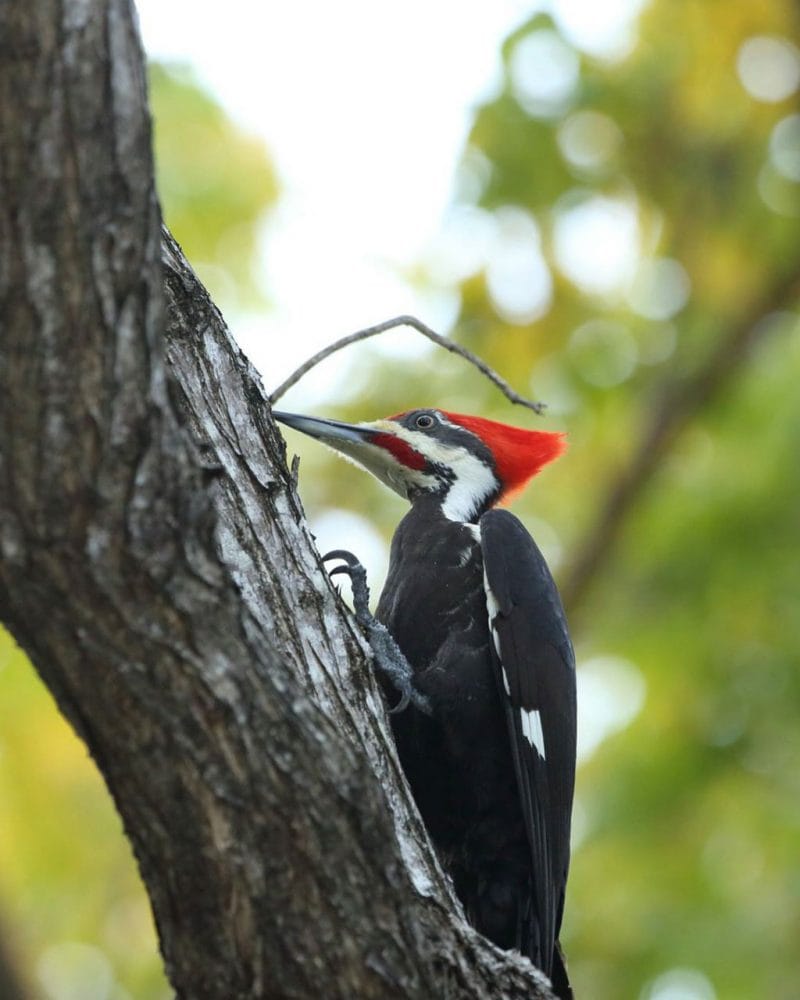
The largest woodpecker in the United States, the pileated woodpecker (Dryocopus pileatus) is about the size of a crow, yet surprisingly hard to spot. You’ll most likely hear its drumming against a tree trunk before you catch a glimpse of its brilliant red crest.
Pileated woodpeckers need dying or rotten trees for their survival, which are the home of carpenter ants, their main food source. Additionally, they also need trees that are large enough for them to build their nest cavities in.
As such, you’ll find these stunning birds in mature forests all across the eastern United States, in the Pacific Northwest and northern California.
More information about pileated woodpeckers: https://www.audubon.org/field-guide/bird/pileated-woodpecker
Best National Parks to See Pileated Woodpeckers
- Congaree National Park, South Carolina
- Crater Lake National Park, Oregon
- Great Smoky Mountains National Park, North Carolina and Tennessee
- Mount Rainier National Park, Washington
- North Cascades National Park, Washington
- Olympic National Park, Washington
- Redwood National Park, California
- Shenandoah National Park, Virginia
- Voyageurs National Park, Minnesota
15. Ruby-Throated Hummingbird
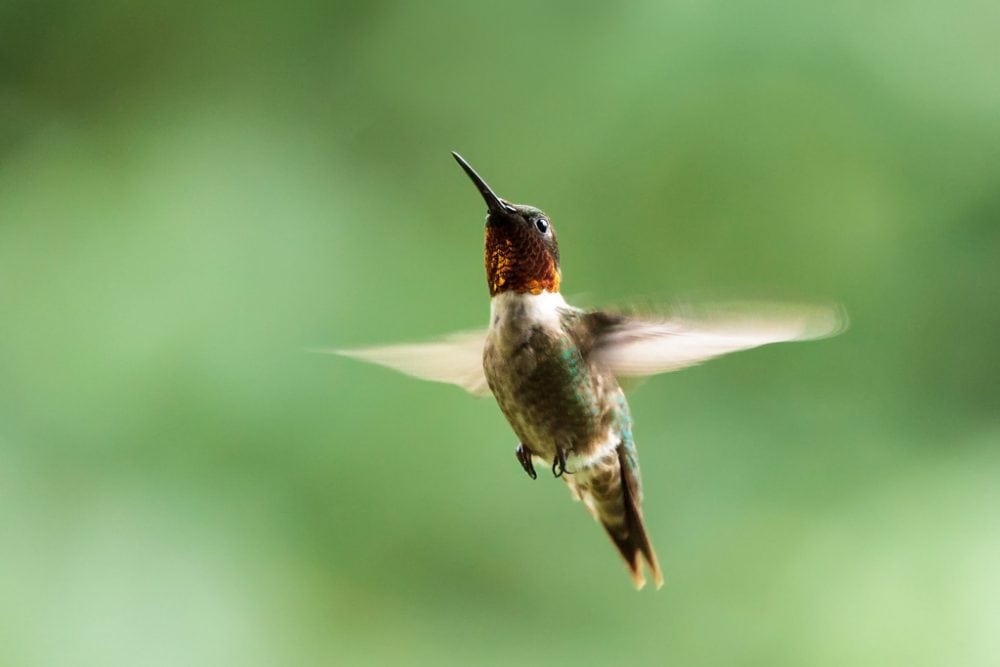
While there are hundreds of hummingbirds in the American tropics and over a dozen in the western U.S., you’ll find only one hummingbird species regularly east of the Mississippi. This is the ruby-throated hummingbird (Archilochus colubris).
These tiny birds spend their summers throughout the eastern United States, before migrating to Central America in the fall.
In late-spring and summer, they’re a common sight all across the East, where they feed in places with abundant nectar-producing flowers. You can see them in gardens, parks, meadows and clearings in forests.
More information about ruby-throated hummingbirds: https://www.audubon.org/field-guide/bird/ruby-throated-hummingbird
Best National Parks to See Ruby-Throated Hummingbirds
- Acadia National Park, Maine
- Congaree National Park, South Carolina
- Cuyahoga Valley National Park, Ohio
- Everglades National Park, Florida
- Great Smoky Mountains National Park, North Carolina and Tennessee
- Mammoth Cave National Park, Kentucky
- Shenandoah National Park, Virginia
14. Anhinga
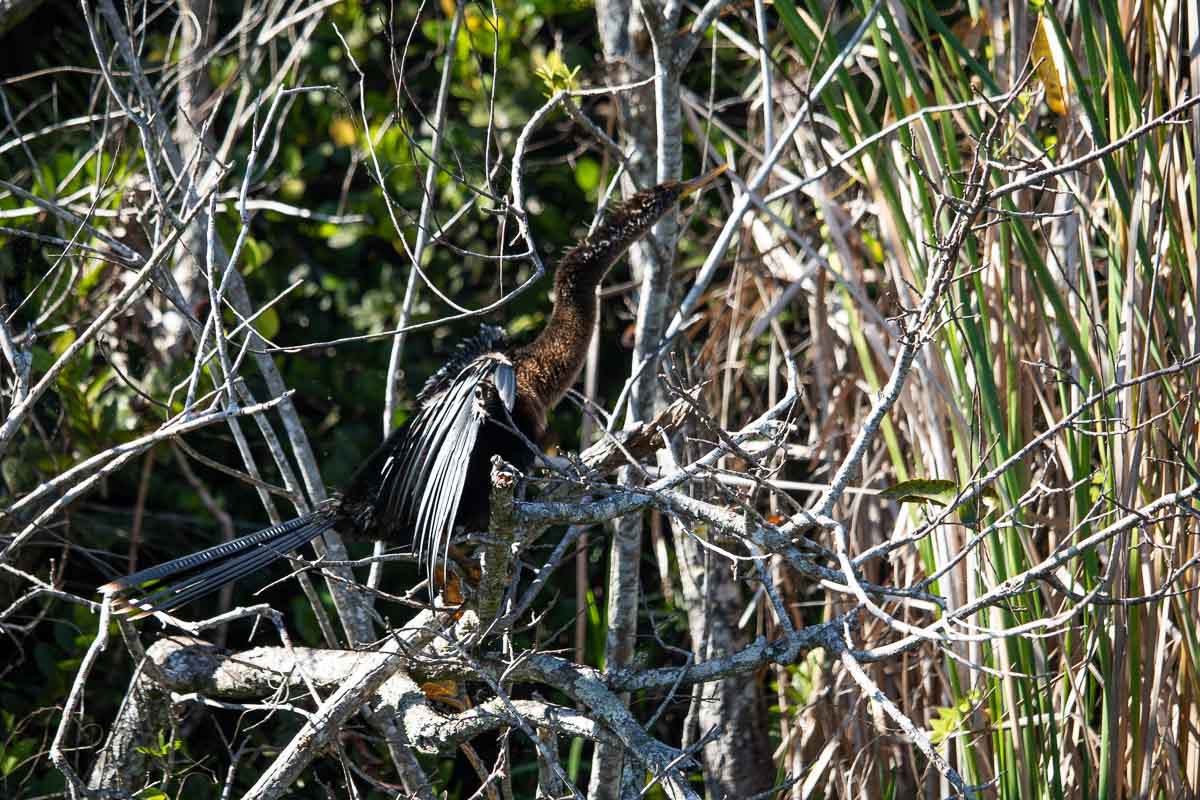
One of the most extraordinary national park birds in America, the anhinga (Anhinga anhinga) is also known as the “snakebird.” It got this nickname because of the way it swims, with its body completely submerged and only its long neck and head above the water’s surface.
The anhinga’s remarkable swimming style is possible because the bird can change its own buoyancy in water. When not swimming, you can often see them drying on a branch or log with their wings half-spread.
Anhingas live around shallow freshwater lakes, ponds and streams, primarily in Florida’s Everglades. Feeding underwater or at the surface, they catch fish by spearing them with their long, pointy dagger-like bill.
More information about anhinga: https://www.audubon.org/field-guide/bird/anhinga
Best National Parks to See Anhinga
- Everglades National Park, Florida
13. Common Loon
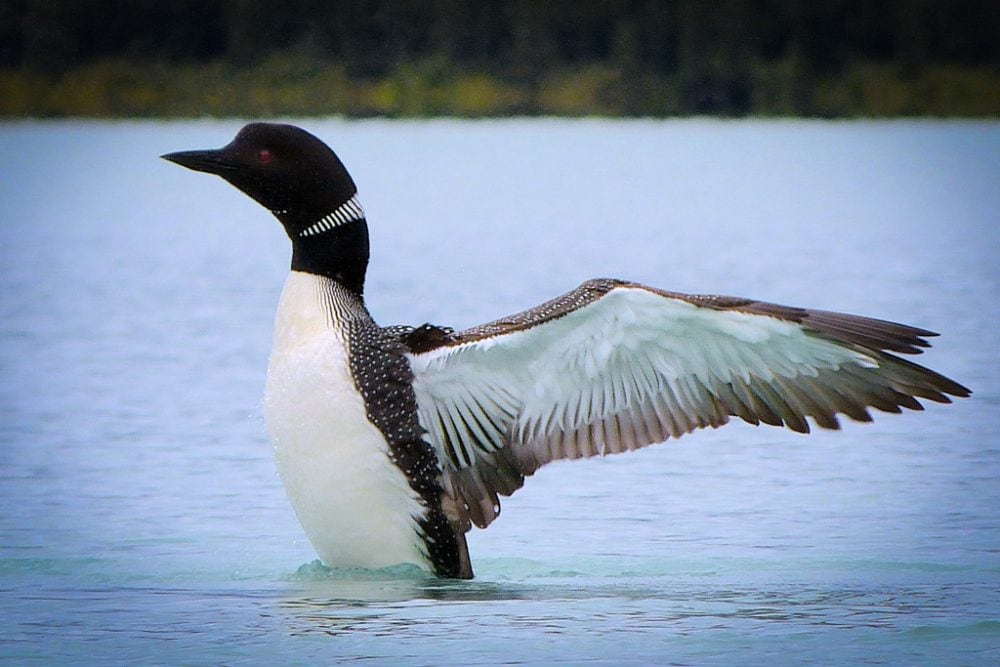
After the howl of a wolf, the call of a loon might just be the “wildest” sound in America.
In summer mornings, the wailing yodeling calls of loons echo across misty lakes in northern woods. In winter, they can be seen all along America’s Atlantic and Pacific coasts and in some southern lakes.
You can recognize common loons (Gavia immer) by their black heads and necks, white striped or spotted backs, and piercing red eyes. Growing up to 3 feet in length, their prey consists mainly of small fish and invertebrates.
More information about common loons: https://www.audubon.org/field-guide/bird/common-loon
Best National Parks to See Common Loons
- Acadia National Park, Maine
- Glacier National Park, Montana
- Isle Royale National Park, Michigan
- Katmai National Park, Alaska
- Lake Clark National Park, Alaska
- North Cascades National Park, Washington
- Olympic National Park, Washington
- Voyageurs National Park, Minnesota
- Yellowstone National Park, Wyoming, Montana and Idaho
12. Turkey Vulture
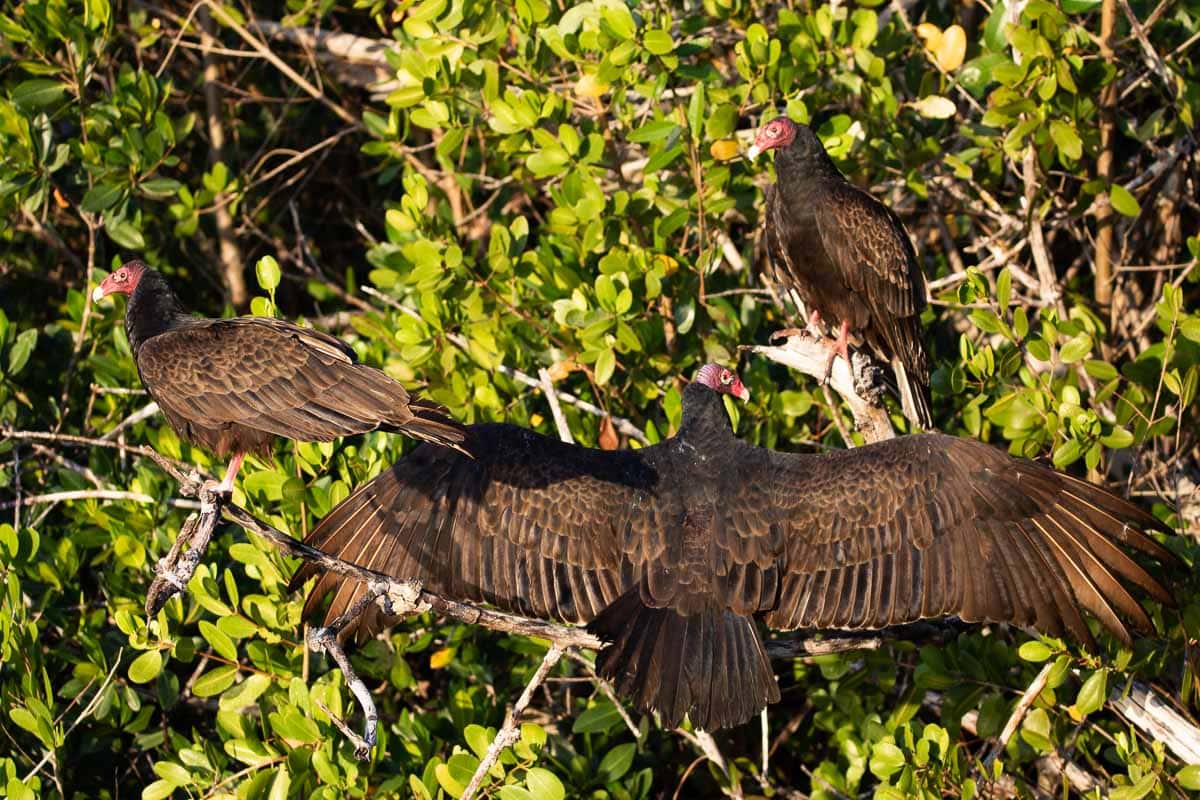
A common sight all over the continental United States, turkey vultures (Cathartes aura) range from the Southeast to New England and across the Southwest. They spend their summers all over the U.S., in winter migrating to warmer regions in the south and southeast.
They may not be the most attractive of American birds, but they do perform an invaluable service. These large birds feed on dead animal carcasses, both cleaning up forests and even roads, and preventing the spread of diseases.
Of America’s two large vulture species—the black vulture and turkey vulture—turkey vultures are the biggest and most widespread. You can recognize this majestic bird by its expansive half-black, half-white wings and distinct bald, red face.
Using warm currents of air to lift them up, vultures are often seen making circles high in the sky.
They use their incredibly strong sense of smell to detect dead animals—turkey vultures can smell animals that have been dead for only 12 hours from over a mile away.
More information about turkey vultures: https://www.audubon.org/field-guide/bird/turkey-vulture
Best National Parks to See Turkey Vultures
- Arches National Park, Utah
- Canyonlands National Park, Utah
- Big Bend National Park, Texas
- Everglades National Park, Florida
- Grand Canyon National Park, Arizona
- Guadalupe Mountains National Park, Texas
- Saguaro National Park, Arizona
- Shenandoah National Park, Virginia
11. Brown Pelican
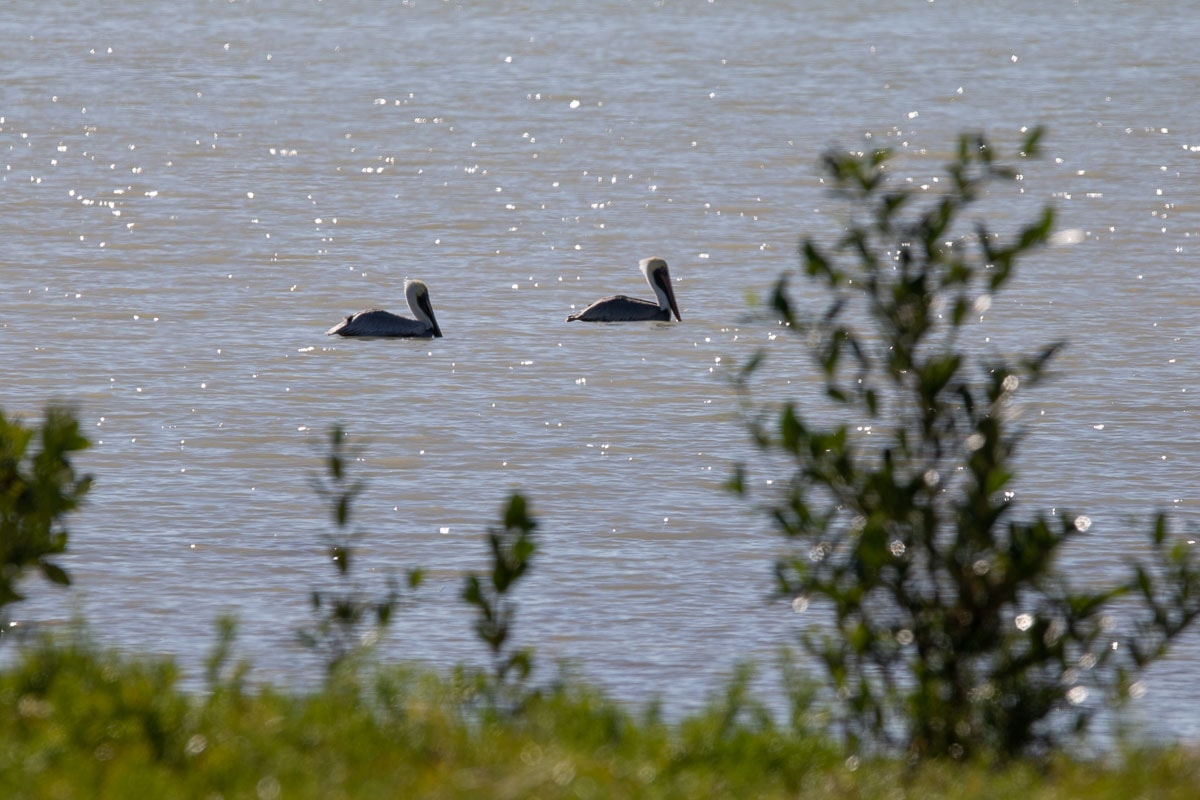
One of the three pelican species found in the Americas, the brown pelican (Pelecanus occidentalis) is abundant along the coasts of California, the Southeast and the Gulf of Mexico.
Watching these amazing birds fish is spectacular, as they dive headfirst into the ocean from as high as 60 feet. They then resurface with a bill filled with fish.
Although brown pelicans are year-round residents of the southern parts of America’s Atlantic and Pacific coasts, they also migrate northward along both coastlines as the temperatures rise in spring. In summer, you can see them as far north as Washington’s Olympic National Park.
More information about brown pelicans: https://www.audubon.org/field-guide/bird/brown-pelican
Best National Parks to See Brown Pelicans
- Biscayne National Park, Florida
- Channel Islands National Park, California
- Dry Tortugas National Park, Florida
- Everglades National Park, Florida
- Olympic National Park, Washington
- Virgin Islands National Park, U.S. Virgin Islands
10. Hawaiian Honeycreeper
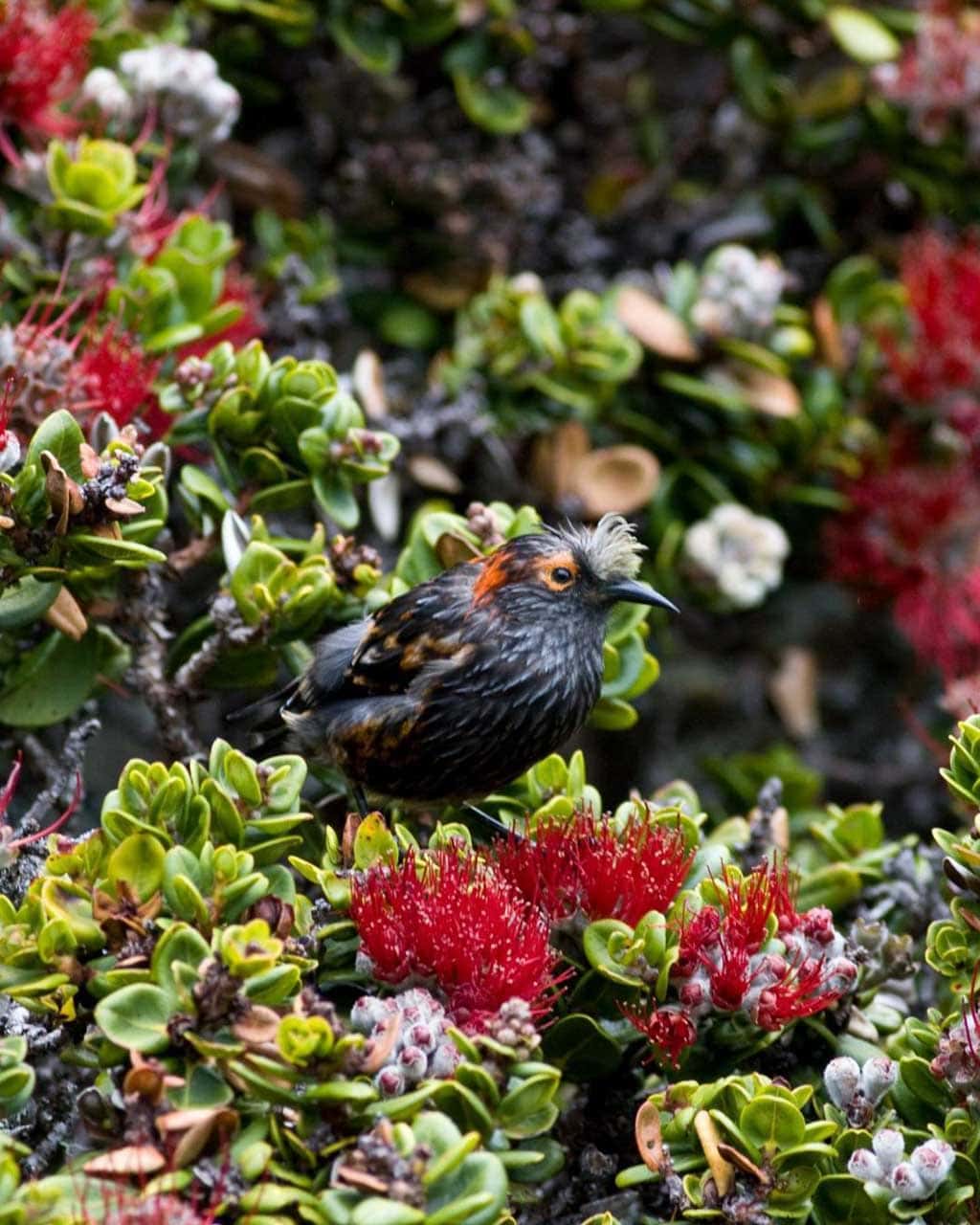
As a super-remote archipelago in the middle of the Pacific Ocean, Hawaii is a playground of evolution. No animals showcase this as beautifully as the native Hawaiian honeycreepers.
Many members of this group of endemic Hawaiian birds are extremely rare and endangered, yet others can be seen relatively easily in parks and nature reserves.
These nectar-eating birds have evolved curved and other specialized bills, while their plumage is often spectacularly colorful. You can see several honeycreepers in Hawaii’s two national parks—Haleakala and Hawai’i Volcanoes.
Famous examples of these amazing national park birds include the ‘apapane, Hawaii ‘amakihi, ‘akohekohe and, especially, the easily recognizable ‘i’iwi.
More information about Hawaiian honeycreepers: https://mauiforestbirds.org/hawaiian-honeycreepers/
Best National Parks to See Hawaiian Honeycreepers
- Haleakala National Park, Maui, Hawaii
- Hawai’i Volcanoes National Park, Big Island, Hawaii
9. Peregrine Falcon
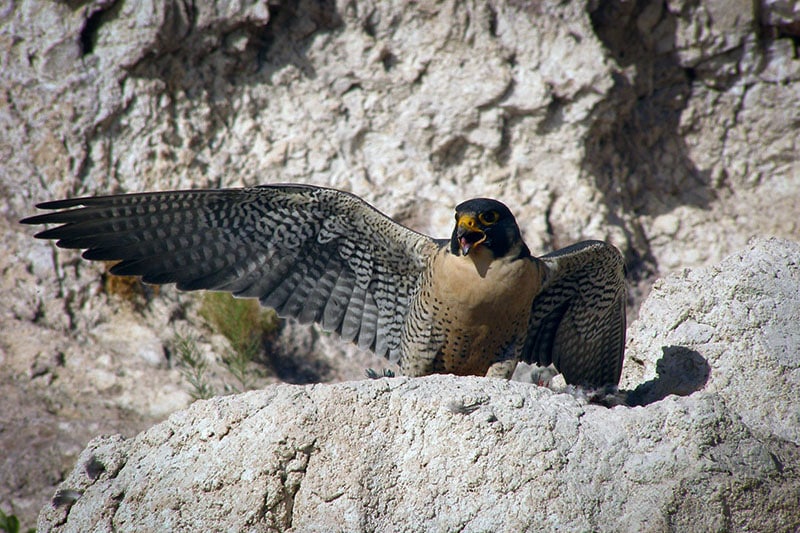
Considered one of the world’s most spectacular birds by many ornithologists and biologists, peregrine falcons (Falco peregrinus) are the fastest animal on Earth. They can reach dizzying speeds of up to 200 miles per hour.
Peregrine falcons are the fighter jets of the avian world, power-diving from incredibly high and striking prey so hard they’re literally knocked out of the sky.
This beautiful white and blue-gray bird of prey is found on all continents except Antarctica, making it one of the world’s most widespread birds. Yet, in many areas, it came perilously close to extinction in the mid-1900s due to the effects of pesticides, most notably DDT.
Nowadays, many U.S. national parks have peregrine falcons protection programs, which often include temporary trail closures during the birds’ breeding season.
One of the most beautiful and amazing national park birds, peregrine falcons nest on cliffs, in tall trees or on hilltops. They live all across the United States, but are most common along the coasts, in the Rocky Mountains and the Southwest canyons.
More information about peregrine falcons: https://www.audubon.org/field-guide/bird/peregrine-falcon
Best National Parks to See Peregrine Falcons
- Acadia National Park, Maine
- Arches National Park, Utah
- Big Bend National Park, Texas
- Crater Lake National Park, Oregon
- Grand Canyon National Park, Arizona
- Guadalupe Mountains National Park, Texas
- Olympic National Park, Washington
- Shenandoah National Park, Virginia
- Zion National Park, Utah
8. Great Egret
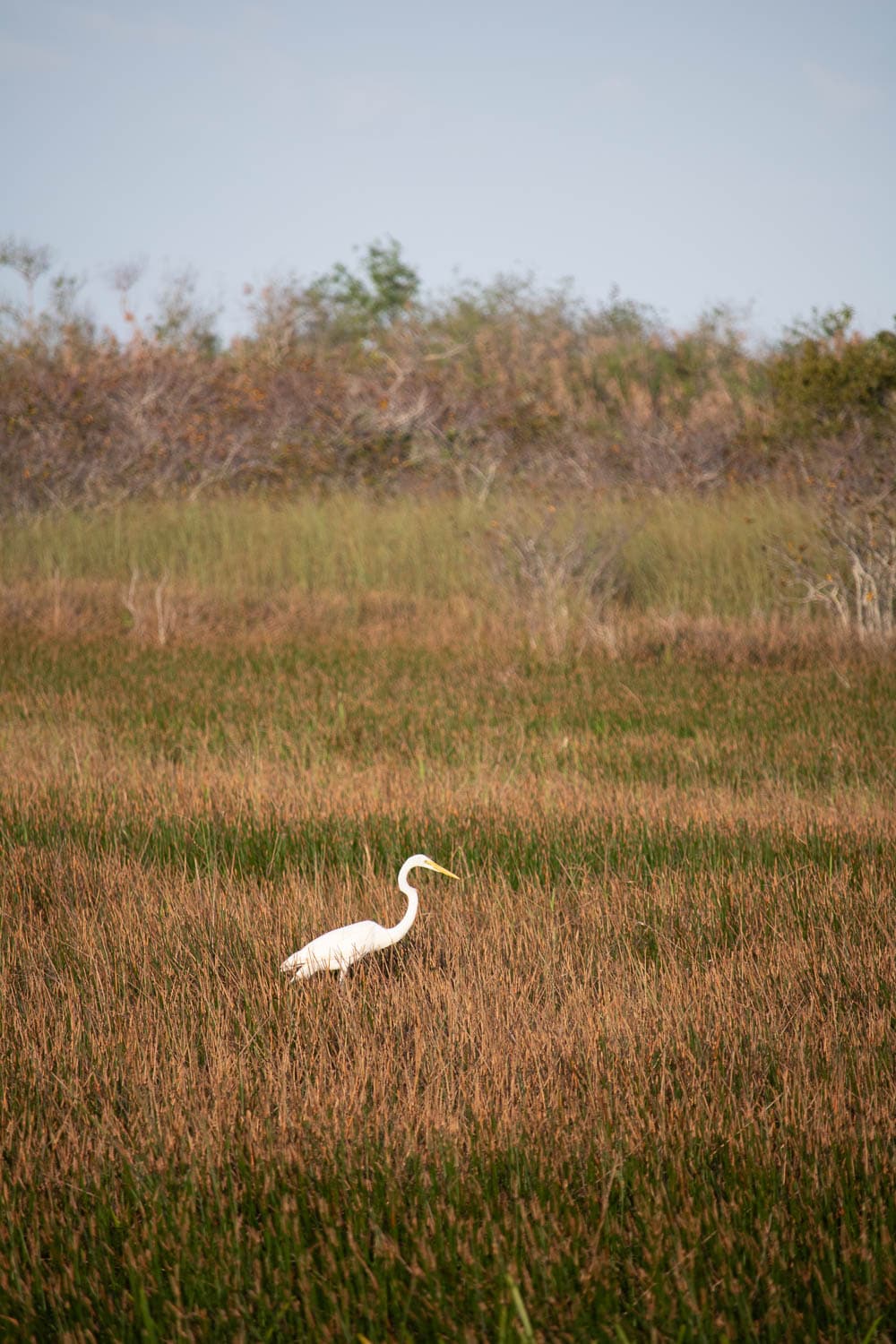
With their beautiful white plumage, great egrets (Ardea alba) are easily spotted wading through their much-preferred shallow water habitat.
They are common aquatic birds in the southern United States, specifically the Gulf of Mexico and the southern Atlantic coast, but also venture as far north as the Great Lakes in summer.
They like all kinds of shallow water, whether it’s fresh or salt, such as ponds, streams, lakes, coasts, wetlands, lagoons and tidal flats. Their diet consists mainly of fish, but a great egret may occasionally also grab a frog, salamander, snake, insect or small rodent.
At the turn of the 20th century, great egrets were almost exterminated from the United States as the result of a new bird-feather fashion trend. This near-eradication of great egrets, as well as other beautifully feathered birds, was one of the reasons Everglades National Park was created in southern Florida.
The saving of the great egret is one of America’s greatest conservation success stories. It was so significant that this bird became the symbol of the National Audubon Society!
More information about great egrets: https://www.audubon.org/field-guide/bird/great-egret
Best National Parks to See Great Egrets
- Big Bend National Park, Texas
- Biscayne National Park, Florida
- Congaree National Park, South Carolina
- Everglades National Park, Florida
- Indiana Dunes National Park, Indiana
7. Common Raven
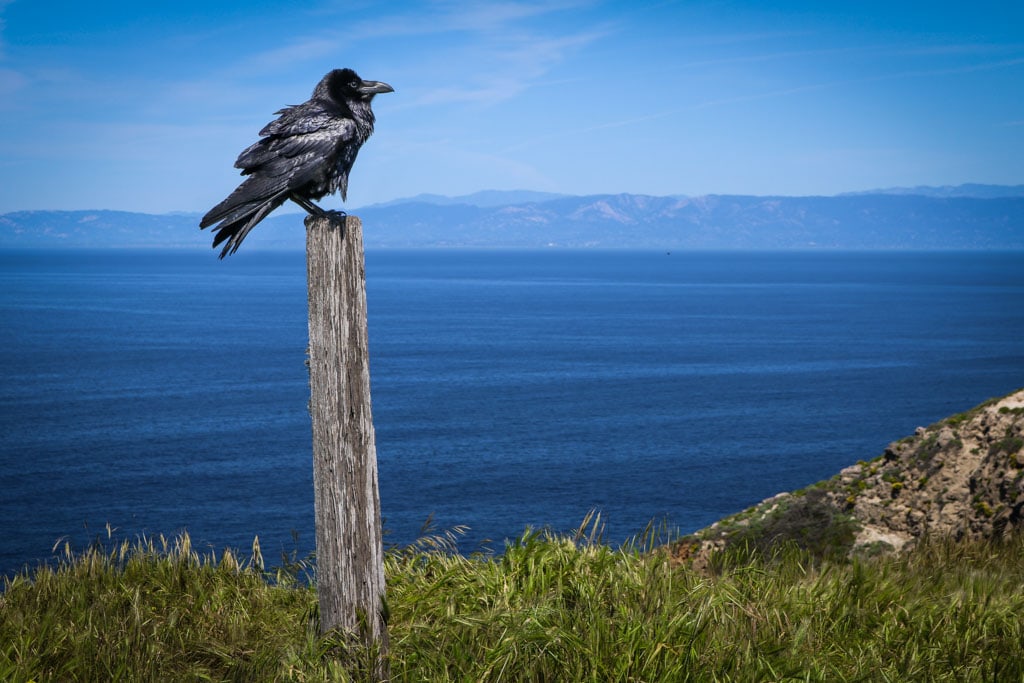
One of the most intelligent birds in America, the common raven (Corvus corax) is exceptionally adaptable and clever.
Depending on the seasons and availability of food, ravens can live as both a scavenger and predator. They eat basically anything, but, if at all possible, seem to prefer animals. Because of their opportunistic character, ravens thrive in the most varied of environments.
You can find them all over North America, except in the Southeast and Midwest. They’re common year-round in areas as diverse as the hot deserts of the Southwest, the Rocky Mountains, the Pacific Northwest forest and the Alaskan tundra.
You’ll often see a pair of ravens soaring through the sky, scouting for prey or scraps of food. Listen for their typical deep and croaking call.
More information about common ravens: https://www.audubon.org/field-guide/bird/common-raven
Best National Parks to See Common Ravens
- Big Bend National Park, Texas
- Channel Islands National Park, California
- Grand Canyon National Park, Arizona
- Mount Rainier National Park, Washington
- Yellowstone National Park, Wyoming, Montana and Idaho
- Zion National Park, Utah
6. Sandhill Crane
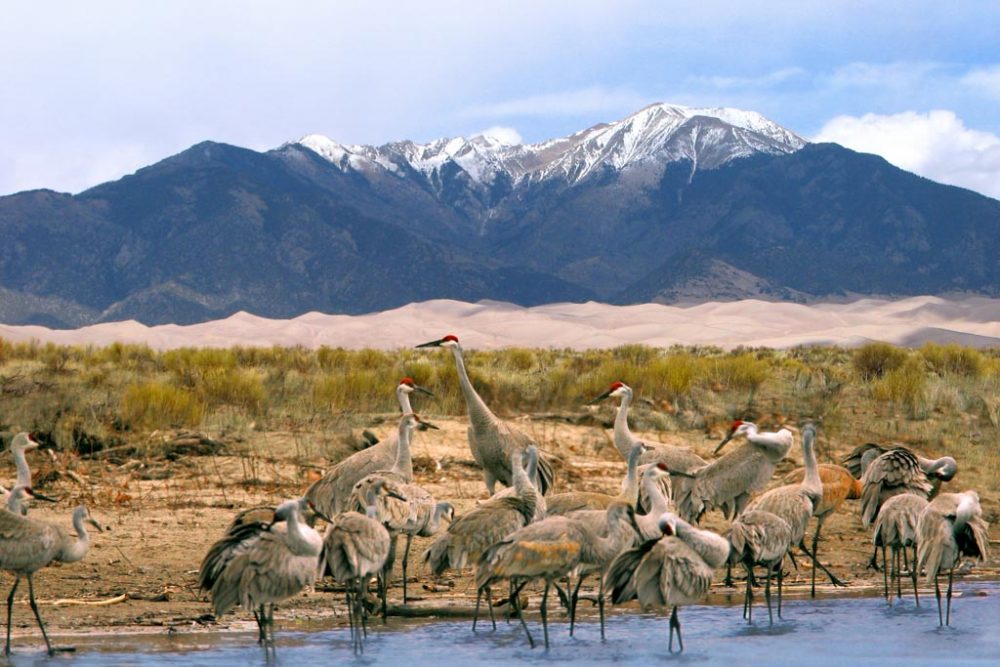
Found in dispersed populations throughout the United States, sandhill cranes (Antigone canadensis) are migratory birds that prefer aquatic environments. They like marshes and bogs, open grasslands and river valleys.
During their north-south migration across North America, they often congregate in enormous groups at stopover spots throughout the northern Rocky Mountains and Great Plains. Springtime gatherings in these locations, which include Great Sand Dunes National Park and Yellowstone National Park, are one of America’s greatest wildlife spectacles.
These large cranes get their name from Nebraska’s Sandhills on the Platte River, which is arguably the world’s best place to see them.
More information about sandhill cranes: https://www.audubon.org/field-guide/bird/sandhill-crane
Best National Parks to See Sandhill Cranes
- Everglades National Park, Florida
- Glacier National Park, Montana
- Glacier Bay National Park, Alaska
- Grand Teton National Park, Wyoming
- Great Sand Dunes National Park, Colorado
- Isle Royale National Park, Michigan
- Yellowstone National Park, Wyoming, Montana and Idaho
5. Greater Roadrunner
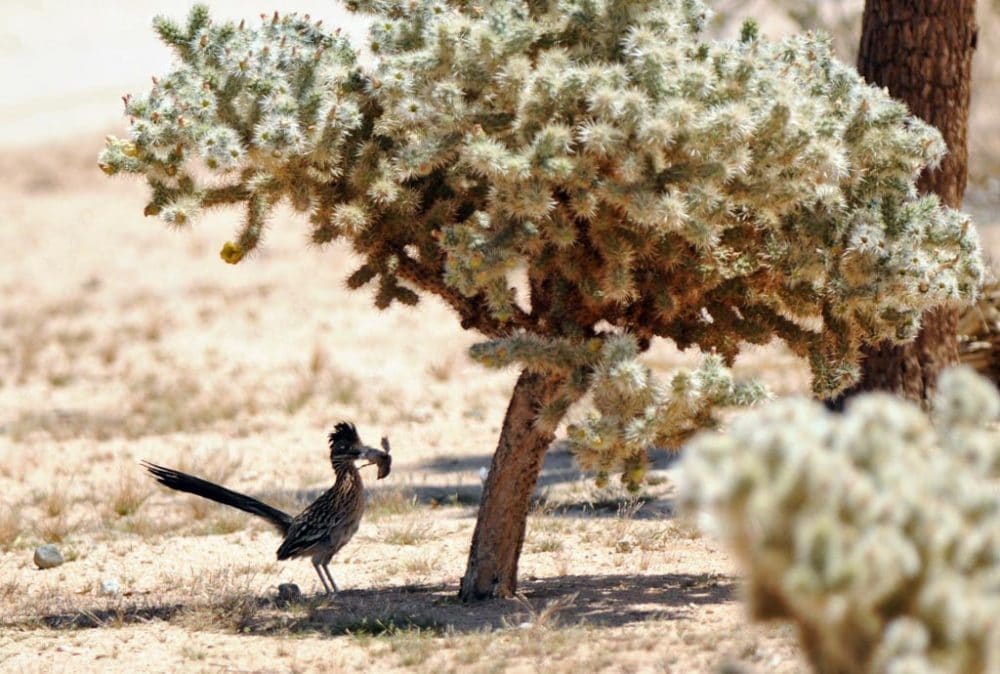
A character in cartoons and southwestern folklore alike, greater roadrunners (Geococcyx californianus) are one of the most fascinating national park birds. They’re famous for their distinct crest and long tail, as well as their curiosity and bravery—they sometimes follow hikers on a trail.
As their name indicates, roadrunners get around by walking or running. They can fly, but only do that when there’s no other option. These funny birds reach speeds of 15 miles per hour, which helps them chase fleeing prey.
A roadrunner’s diet is extremely varied and consists of large insects, centipedes, tarantulas and scorpions. They also hunt lizards, snakes, small birds and mice.
You can see roadrunners all across the deserts of the Southwest, from California and Arizona to New Mexico and Texas.
More information about greater roadrunners: https://www.audubon.org/field-guide/bird/greater-roadrunner
Best National Parks to See Greater Roadrunners
- Big Bend National Park, Texas
- Death Valley National Park, California
- Guadalupe Mountains National Park, Texas
- Joshua Tree National Park, California
- Saguaro National Park, Arizona
- White Sands National Park, New Mexico
4. Horned Puffin
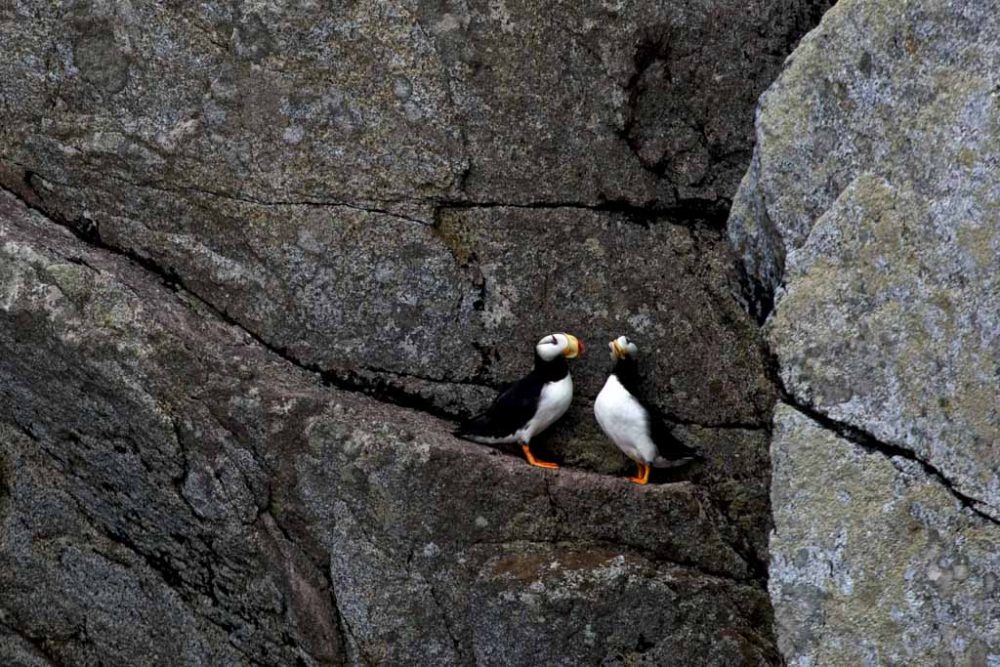
Arguably the cutest of all birds you can see in national parks, horned puffins (Fratercula corniculata) are fish-eating coastal birds famous for their large yellow-orange-and-red beaks.
In summer, they nest in colonies on sea cliffs on the coasts and islands of Alaska. In all other seasons, on the other hand, they can be quite far out at sea. Horned puffins are strong fliers, but also skilled swimmers. They hunt while swimming underwater through schools of fish, catching fish with their beak.
You’ll often find horned puffins in the company of their larger cousins, tufted puffins, and you can recognize them by the black “horn” above each eye.
More information about horned puffins: https://www.audubon.org/field-guide/bird/horned-puffin
Best National Parks to See Puffins
- Glacier Bay National Park, Alaska
- Katmai National Park, Alaska
- Kenai Fjords National Park, Alaska
3. Trumpeter Swan
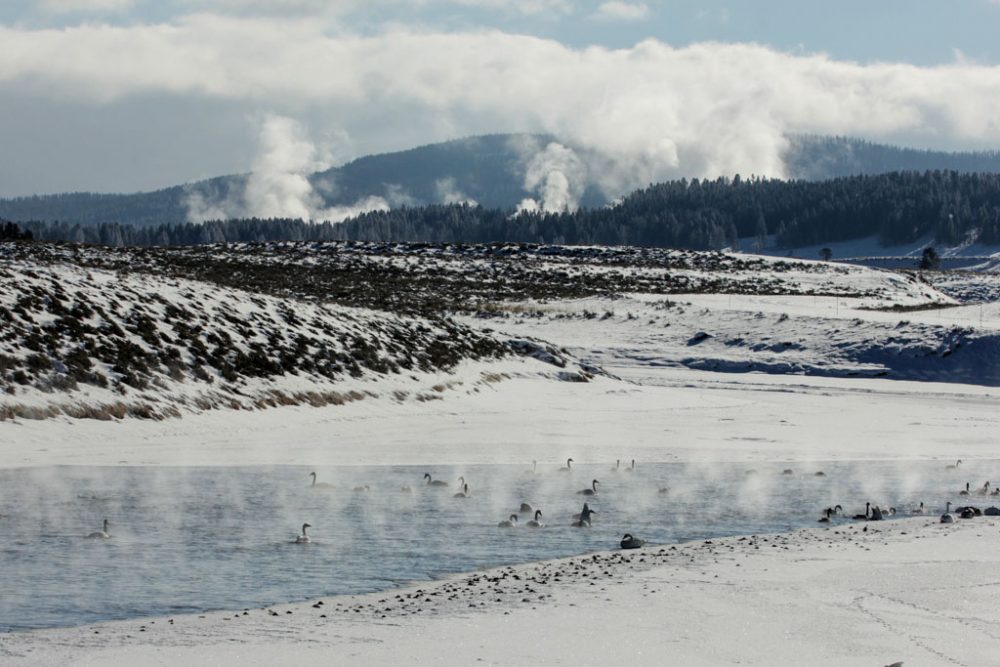
Once abundant all over North America, trumpeter swans (Cygnus buccinator) almost went extinct in the early-20th century. Because of overhunting and the westward advance of civilization in America, there were fewer than 100 trumpeter swans left in the contiguous United States by the 1930s.
Nowadays, there are relatively large populations of trumpeter swans in the Pacific Northwest and Alaska, as well as in pockets throughout the northern Rockies and around the Great Lakes.
The rebound of the trumpeter swans is considered yet another amazing success of the 20th-century conservationist movement in America.
These beautiful, elegant white birds are North America’s largest waterfowl. They live in and around large rivers, lakes and ponds, preferring shallow, still or slow-moving, water with plenty of vegetation.
More information about trumpeter swans: https://www.audubon.org/field-guide/bird/trumpeter-swan
Best National Parks to See Trumpeter Swans
- Denali National Park, Alaska
- Grand Teton National Park, Wyoming
- Olympic National Park, Washington
- Yellowstone National Park, Wyoming, Montana and Idaho
- Wrangell-St. Elias National Park, Alaska
2. Bald Eagle

The most iconic bird in America, the majestic bald eagle (Haliaeetus leucocephalus) is a symbol and emblem of the nation. With its massive talons, sharp beak, huge wings and distinct white head, this bird is literally a force of nature.
Yet, as symbolic and revered as the bald eagle may be, it’s not always a respectable bird in its behavior. While they’re more than capable of catching everything from fish to mammals and other birds, bald eagles often prefer eating carrion. Additionally, they also don’t shy away from stealing other animals’ food.
However, the sheer size, power and might of this eagle is sufficient to put it near the top of this iconic national park birds list. In terms of fame and recognizability, few—if any—American birds come close to the bald eagle.
Bald eagles live all over the United States, but they are more abundant near water where there are plenty of food sources. This includes river valleys, coasts, lakes and wetlands.
They’re particularly common along the Mississippi River, in southern Florida, the Great Lakes, the Oregon-California border region, and the coasts of the Pacific Northwest, Alaska and Maine.
More information about bald eagles: https://www.audubon.org/field-guide/bird/bald-eagle
Best National Parks to See Bald Eagles
- Acadia National Park, Maine
- Congaree National Park, South Carolina
- Everglades National Park, Florida
- Glacier National Park, Montana
- Glacier Bay National Park, Alaska
- Isle Royale National Park, Michigan
- Katmai National Park, Alaska
- Kenai Fjords National Park, Alaska
- Olympic National Park, Washington
- Redwood National Park, California
- Voyageurs National Park, Minnesota
- Yellowstone National Park, Wyoming, Montana and Idaho
1. California Condor
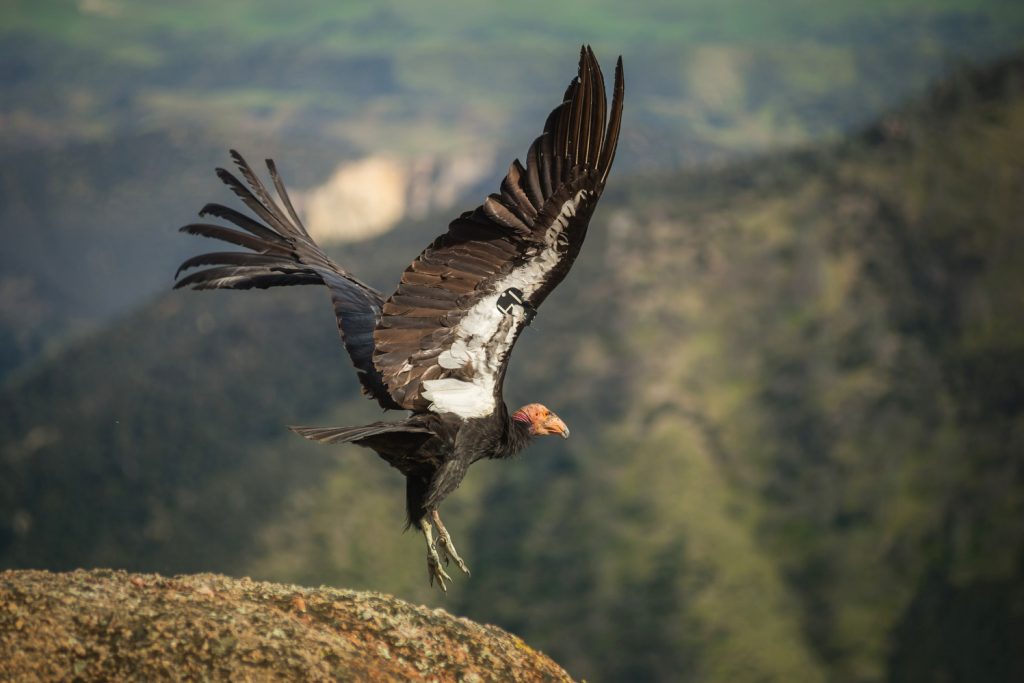
In the mid-1980s, after decades of poisoning, poaching and habitat loss, fewer than 30 California condors (Gymnogyps californianus) existed in the wild.
So, to save the species from extinction, all remaining birds were captured for a remarkable breeding program. (The species was officially extinct in the wild in 1987, but that was because all remaining wild condors were caught.)
Thanks to the success of that breeding program, several captive-bred California condors have been released into the wild. Now, there are over 450 wild California condors.
While this proves the amazing merit and potential of wildlife conservation, these condors are still one of the rarest bird species in the world. They continue to be monitored intensively.
This mighty and magnificent bird—the largest land bird in North America—can now be seen soaring through the skies in a few locations in California, especially in Pinnacles National Park. You can also see them in and around the Grand Canyon and Zion National Park.
As far as national park bird conservation goes, it doesn’t get any better than the story of the California condor.
More information about California condors: https://www.audubon.org/field-guide/bird/california-condor
Best National Parks to See California Condors
- Grand Canyon National Park, Arizona
- Pinnacles National Park, California
- Zion National Park, Utah








Excellent photos. That bluejay is magnificent. The shot of the owl is amazing. I have never seen one burrowed before.
Yeah, aren’t those burrowing owls amazing?!